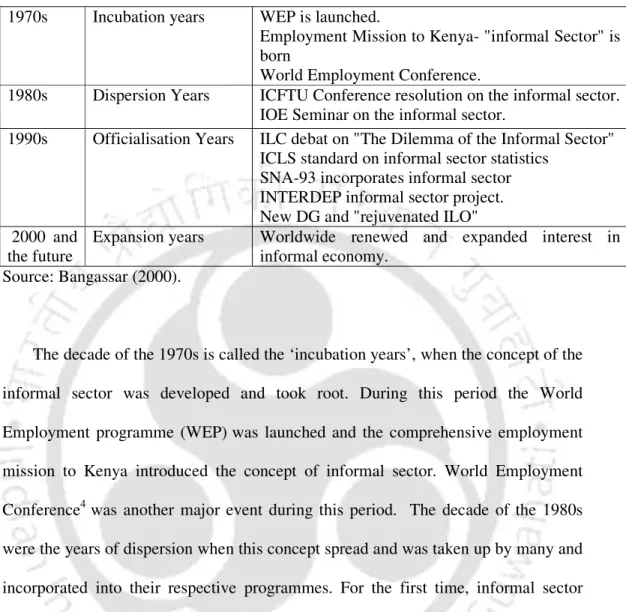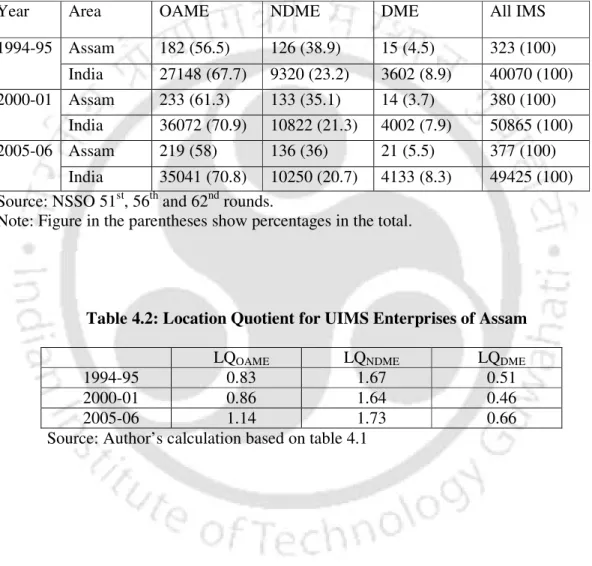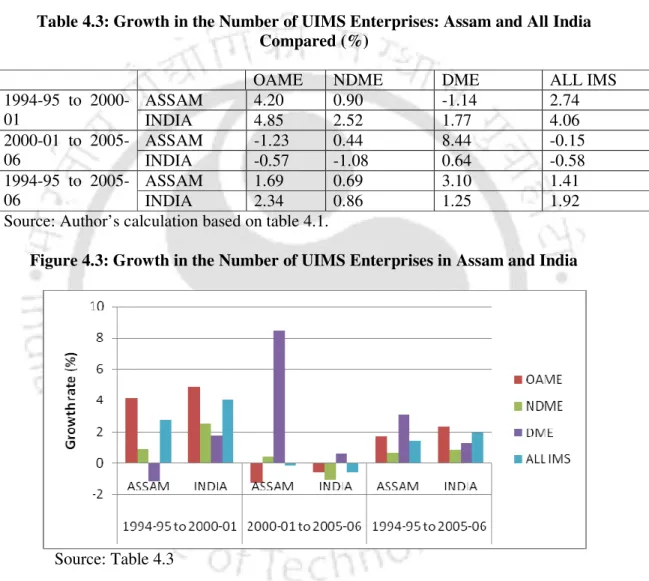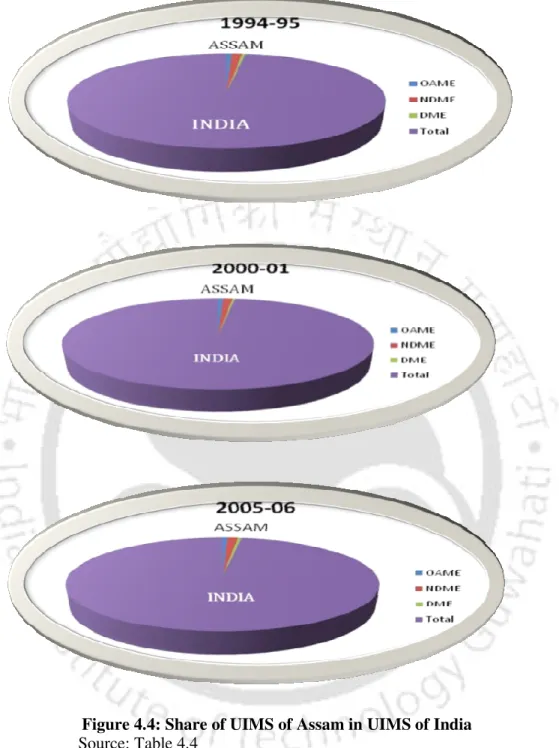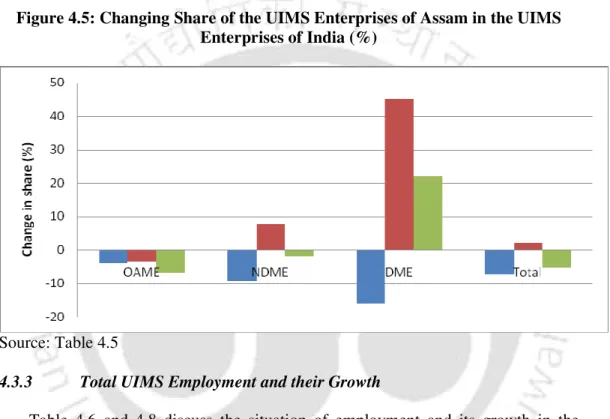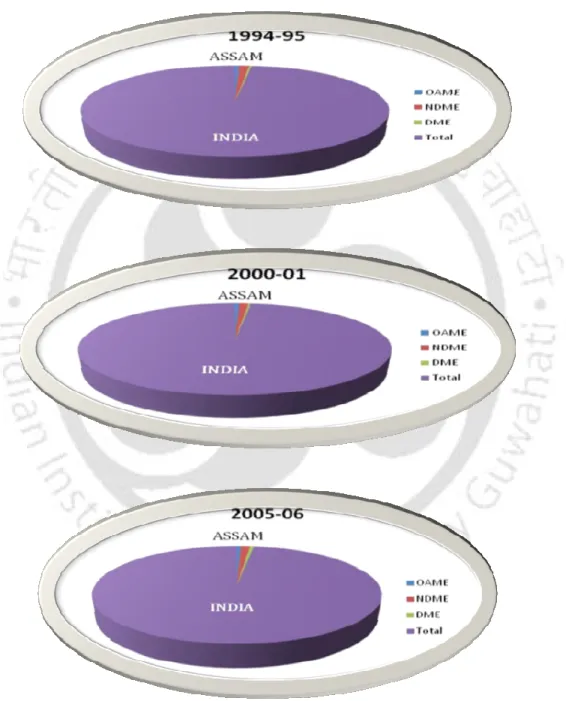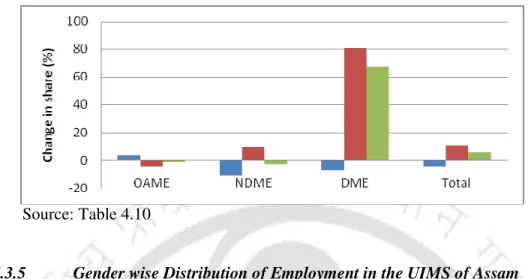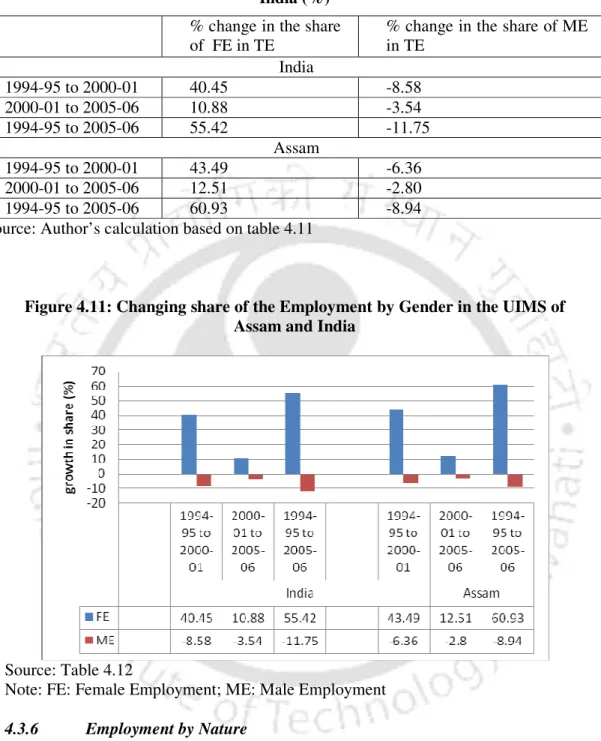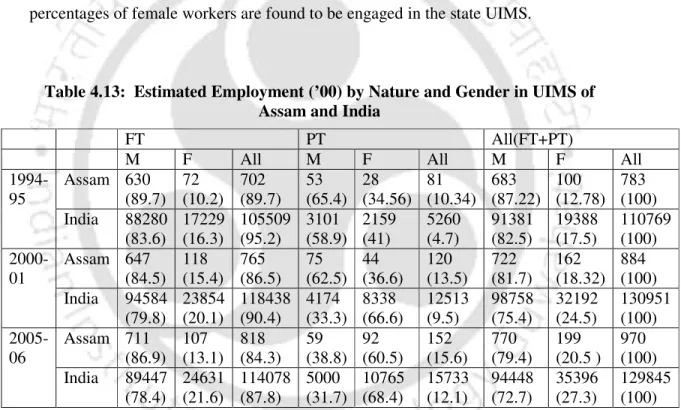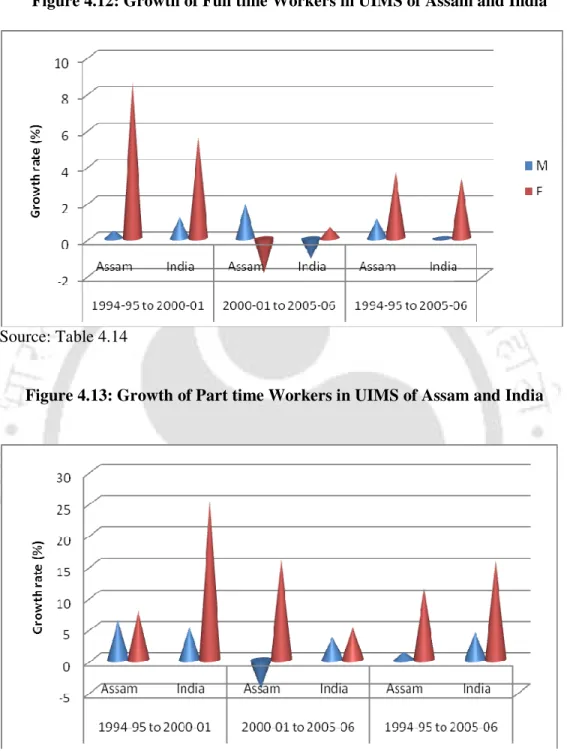This results in the existence, expansion and persistence of the informal sector in these economies. At the same time, more than 99 percent of all production units belong to the informal sector (Kumar and Gupta 2008, Sahu 2008). Therefore, it is appropriate to examine the functioning of the informal sector in the post-reform period.
To investigate the social security status of the employees of the state UIMS. Thus, the informal sector can be considered as a subgroup of the unorganized sector (Sharma and Chitkara, 2006). Subsequent studies demonstrate the importance of the informal sector in national economies and also show that there is a significant linkage (both complementary and competitive) between the formal and informal segments of the national economy and that any attempt to will lead to a demarcation of the informal sector. give rise to various difficulties and inconsistencies (Santos 1979, Breman 1976, Hammer and Mannel 1989, Castells and Portes 1991).
In fact, the survival of the informal sector depends on the formal sector. However, the share of OAMEs in state UIMS has been consistently lower than their national counterpart. The share of state UIMS in India's UMIS is shown schematically in Figure 4.4.
During the later reform period, LEIs were positive for the state and country's UIMS.
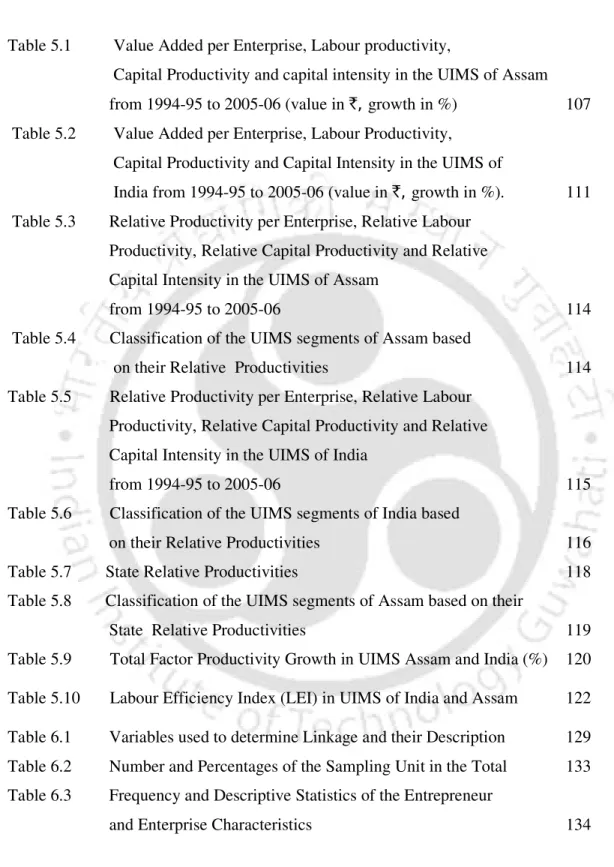
Introduction 127
Methodology and Data Source 127
A logistic regression model is used to determine the probability of the existence of a link between the formal and informal sectors. The availability of credit is another important determinant of the likely linkages between the formal and informal sectors. The expected growth of the firm is another important determinant of the likely link between the formal and informal sectors.
Slightly more than half of the informal units show that a backward connection exists between the formal sector (formal manufacturing and formal trade sector) and the state's informal manufacturing sector. Full-time operation of the informal unit is expected to improve its linkage with the formal sector. In other words, these factors are likely to reduce the existence of the backward linkage between the formal and informal sectors.
66 percent of workers are expected to work (under normal circumstances) more than 8 hours a day. There are also significantly more men than women employed in the informal sector of the country and state.
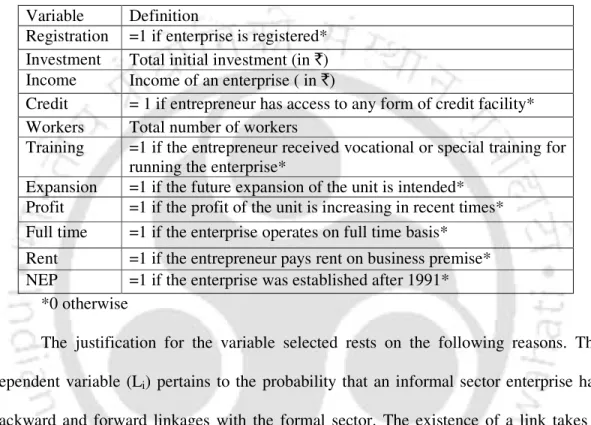
General Background of the Surveyed Entrepreneurs and Enterprises 133
Backward and Forward Production linkage 136
As the field survey showed, 52.6 percent of the surveyed companies maintain a direct feedback link with the formal sector in terms of supplying raw materials, equipment/machinery and consumer goods from the formal sector to the informal sector. A direct feedback link with the informal sector itself is observed in 22.4 percent of enterprises and in 25 percent of cases industries depend on formal and informal sources of raw materials and intermediate goods (Table 6.4). For the remaining industries, the informal sector is also the main supplier of raw materials/intermediate goods.
The downstream link in terms of sales of finished products of the informal manufacturing sector to the formal sector was found to be weak, as only 21.5 percent of the sampled firms were said to sell their products directly to the formal sector. The largest link with the formal sector is seen in the steel industry, where 50 percent of informal production units sell their products to formal units. Thus, the informal manufacturing sector in the country largely satisfies consumer demand.
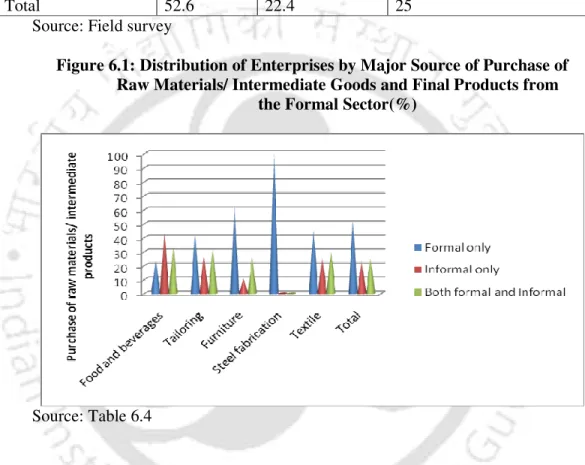
Discussion of the Regression Model 139
This implies that high investments and high incomes have a marginal impact on the existence of the backward linkage. The model confirms the initial assumption of the positive relationship between the number of employees and the existence of backward linkage. This implies that informal units with more hired workers are more likely to establish a backward link with the formal units.
This confirms the initial suspicion of the positive relationship between the backward link and the intention for future expansion. The correlation coefficient between backward linkage and intention for future expansion also appears to be insignificant. 9. The NEP is found to be negative, implying a negative relationship between the introduction of economic reforms and the existence of the backward linkages.

Chapter Summary 147
Sualkuchi, also known as the "Manchester of the East", is a 'census town' in Kamrup district. The maximum likelihood estimation method is used because categorical dependent variables cannot be solved with the usual OLS method. The Hosmer Lemeshow test is applicable for samples of 400 or more; details available in Hosmer & Lemeshow (2000) Applied logistic regression (2nd edition).
Social Security and the Informal Sector in Assam
State level Initiatives 150
The other southern states of Karnataka, Tamil Nadu and Andhra Pradesh also constitute labor welfare councils for the workers in the informal sector. But Uttar Pradesh, India's largest state, lacks specific social security schemes for the unorganized workers. Another Shramik Suraksha scheme has been maintained by the government for the rural and urban informal workers.
Government of Maharashtra has established Mathadi Workers Welfare Board for providing social security measures to workers engaged in loading and unloading of goods. Welfare schemes for beedi workers include financial assistance for construction of houses and for electrification purposes. In addition to these schemes, the West Bengal government has been providing financial assistance to workers in closed factories since 1998.
Social Security Schemes in Assam 153
A health care scheme was introduced in the year 2004-05, with the primary objective of meeting the needs of the people who reach 70 years of age. A one-time grant of `700 was given to the eligible senior citizens during 2005-06, apart from providing financial assistance for the purchase of medicines. Another scheme called Sawayamsidha has been in operation since 2001 which is mainly aimed at the social and economic empowerment of women through the formation of the self-help groups (SHGs) (GOA 2011).
Under the Swarna Jayanti Sahari Rozgar Yojana, ` 843.27 lakh was released to the urban committees to create employment opportunities in urban areas. A few new initiatives by the Assam government include setting up a 'Terrorist Victims Welfare Board' to take care of the family of victims of terrorist violence, especially widows and children on a sustainable basis and raising the freedom fighters' pension from ` 2500 per month to ` 3000 per month (GOA 2007). and vulnerable sections of society. However, there are no specific schemes for the unorganized sector, which indicates that the informal sector workers in the state suffer from social insecurity. Although several legislative and programmatic measures have been taken to address the problems of workers in the informal sector, the measures have failed to achieve the desired goal, partly due to ignorance, illiteracy and lack of unionization among workers on the one hand, and resource constraints of the state on the other hand (Planning Commission 2001).
Composite Labour Security Index 155
- Methodology and Data Source 155
- Results from the Field Survey 163
Each of the security indices is calculated in the same way as the aggregate CLSI is calculated. Promotion opportunities in the current job: Promotion prospects increase the job security of workers. While conducting the field trip, 67 percent of the sampled workers were found to be permanent in nature.
A very small proportion of the workers (16%) had the chances of promotion in the same position. None of the workers interviewed have union membership; but a majority (63%) of them feel the necessity to have such a union in the unit. 45 percent of respondents reported that they enjoyed the income of the other family members.
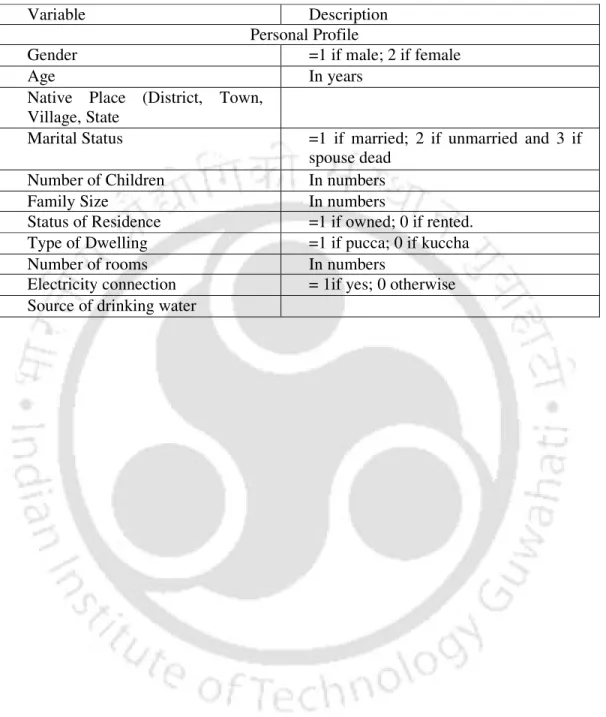
Chapter Summary 172
None of the units have been found to have a nursery where the working mothers can keep their children while they are at work. The workers over the age of 60 are found to be working because of the lack of financial support from the family. Insufficient family income and the death of the family's main breadwinner are the main reasons why women become involved in UIMS.
The social security status of the state's informal workers is found to be in a critical state as indicated by the low CLSI (0.43). However, the income and financial security of these workers are found to be well protected as indicated by the corresponding indices of 0.71 and 0.78 respectively. The CLSI for the female workers in the state UIMS is found to be 0.44, which is marginally higher than the total number of workers (including male and female) and therefore found to be marginally better protected.
Summary and Conclusions
- Conclusions 182
- Policy Suggestions 183
- Limitations of the Research 184
- Further Research Issues 185
The share of NDMEs in the state's UIMS is found to be higher than the share of NDMEs in the UIMS of India. The share of state UIMS companies in India's UIMS companies shows a marginal decline from 0.8 percent to 0.76 percent during the period under review. In contrast, state DMEs had a remarkably high share of the country's UIMS.
The employment growth in the country's UIMS is found to be slower than the employment growth in the state's UIMS. The employment share of the state's UIMS in the country's UIMS is found to have increased (from 0.70 percent to 0.74 percent) during the study period. Although a smaller percentage of women are employed in the state's UIMS compared to all UIMS in India, their growth appears to be higher for the state's informal sector.
